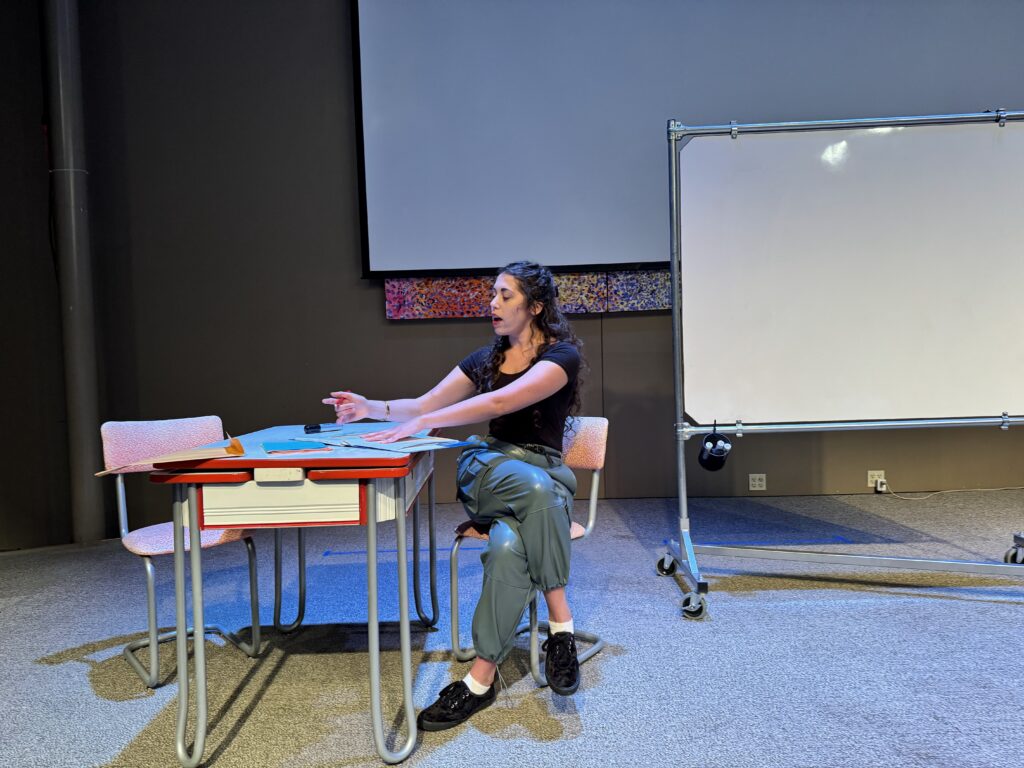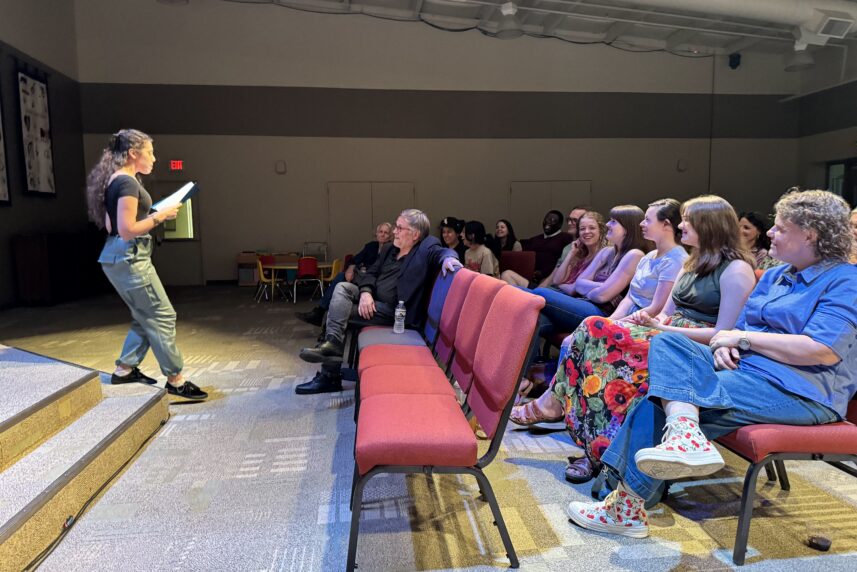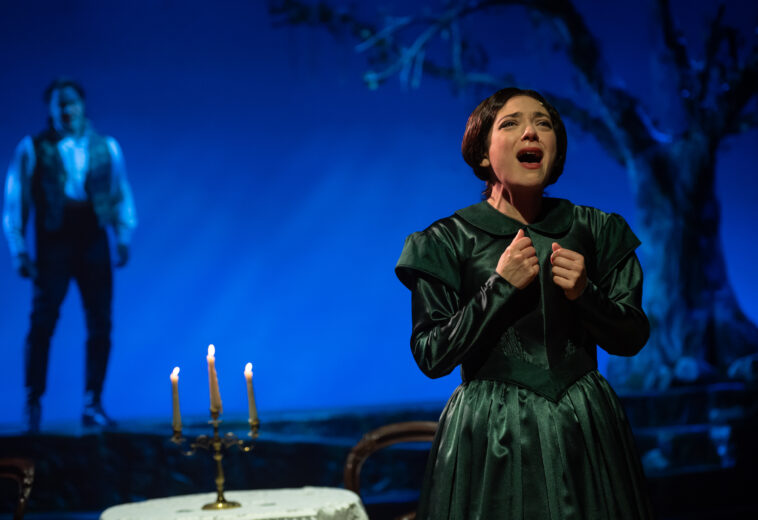BY ELIZABETH BRIGNAC
I interviewed Matara Hitchcock, Justice Theater Project’s executive producer, about their current production, Blank, on Monday, May 13. The show had been described as “a script riddled with blanks that leaves the audience in charge of how the story will unfold.” It sounded like a theatrical version of MadLibs. I had questions.
Hitchcock did her best to answer them, but as we both soon discovered, this show doesn’t lend itself to solid answers.
Me: “Is it improv?”
Hitchcock: “Parts of it are kind of like improv.”
Me: “Is it comedy?”
Hitchcock: “Some nights, it’s comedy.”
Hitchcock was partly hampered by the fact that as a performer in Blank, she wasn’t allowed to see the script until the night she performed. Each night’s performer is unique, and none of them know ahead of time what to expect. Hitchcock was also running into the difficulty that the play reinvents itself every night. So I was asking her about a play whose script she had never read and whose whole point is that it doesn’t really exist until it happens. (I didn’t know quite how challenging that interview would be when I asked for it – thanks again, Matara!)
In Blank performances the audience, the performer, and the playwright work together each night to create the play. The only participant in that triangle who knows the script ahead of time is the playwright, Nassim Soleimanpour, and, as he points out, he is not present at the performance. So nobody physically in the room knows exactly what’s going on. (I exaggerate. The Justice Theater Project’s Producing Artistic Director, Jerry Sipp was there. He knew exactly what was going on and was clearly enjoying himself.)

One of my questions going in was whether the event would feel more like a play or more like a game. (To me, it felt like a play.) And was the performer even really performing if they hadn’t seen the script? Would she be more of an M.C. directing the event? Or the subject of the play, relying on cues to improvise her performance? (She was all of these to some extent – Blank deliberately juggles the participants’ roles – but I can say that the version of Blank I saw focused less on Hitchcock as a character than I expected and relied heavily on her skills as a performer.)
I felt intellectually engaged by Blank. It made me think about the nature of the interaction between writers, performers, and the audience, not just in this play, but in any context in which actors convey a writer’s story to an audience – the creative input each brings to the table.
Also, I thought about the community that forms each time people come together in that context – one defined by the event we are all engaged in creating together, and one that is unique. The act of creating a play is building that community that will never come together again in the same way to create the same event, so each performance is special. (This idea is clearly important to Soleimanpour. On a related note, at one point the play will ask you to take photos. Without giving spoilers, I encourage you to do so – I did not, and I wish I had.)
Finally, the play I saw asked me to consider how we script our own lives – who we are as characters, how we “write” ourselves and the people in our lives, and the way in which our interpretations of our life events create their own version of a play in which we are all both the audiences and the performers.
That’s a lot of thinking for a play we helped create on the spot!
Those are the thoughts with which Blank left me. I have no idea what thoughts your version of the play will leave you. If you want to find out, Blank is playing at various locations around the Triangle through Saturday, May 25. For a list of performers, locations and times, click here.



